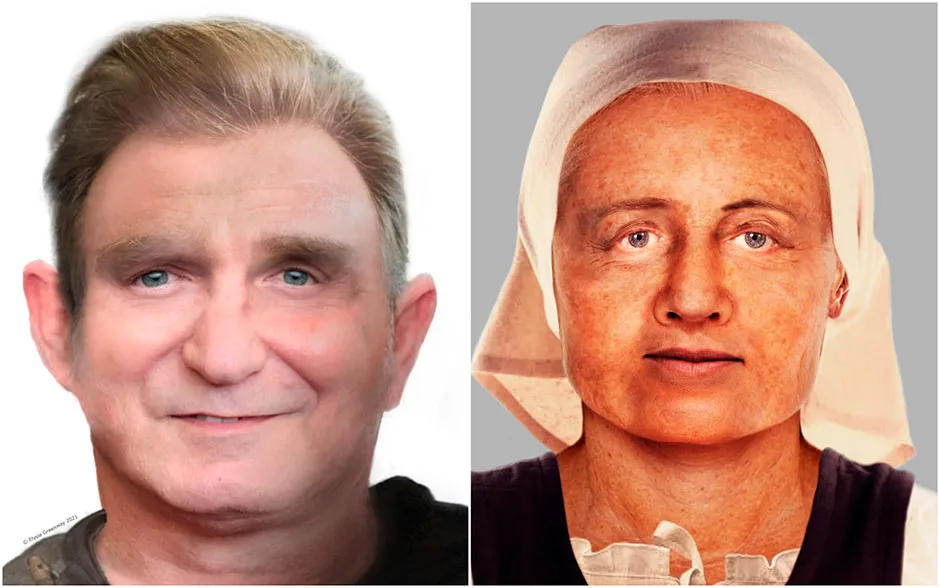Two faces have been reconstructed from skulls which could be 700 years old after remains were found during excavations in an Edinburgh graveyard.
Forensic artists used hi-tech software to reconstruct the faces of remains found at the medieval site in Leith, dating back to between the 14th and 17th Centuries, as part of the Trams to Newhaven project.
The results show how a man and woman aged between 35 and 50 might have looked at the time, with early analysis suggesting the woman may have suffered from nutritional deficiencies.
The man's facial reconstruction was created by Elysia Greenway, and the woman's by Viviana Conti, both of whom are masters graduate students at the University of Dundee.
“These fantastic reconstructions help us connect directly with our forebearers," said City of Edinburgh Council archaeologist John Lawson.

“Often we as archaeologists just see the physical remains but the work undertaken by Dundee University’s forensic artists helps put the flesh, so to speak, back on to these remains and by doing so I feel brings them closer to us today.”
The pair used special 3D scanners to build digital versions of the skulls, which were found during excavations outside South Leith Parish Church on Constitution Street last summer.
Read more about archaeology:
- Royal purple cloth from the time of the Old Testament found in Israel
- Palaeolithic musical instrument played for the first time in 17,000 years
- How we deciphered Ancient Egyptian hieroglyphs
A team of archaeologists were working to remove any human remains that could be affected by the tram works – and they exhumed more than 360 bodies dating from between 1300 and 1650.
Greenway and Conti have recorded vlogs for the project’s YouTube page to discuss the process.
“Elysia and Viviana have done an excellent job reconstructing the faces of these individuals," said Lynn Morrison, forensic art lecturer at the University of Dundee.
“This internship has given them a great opportunity to develop the skills learnt on the course and gain some valuable experience in the field. I am delighted to see how well they are doing.”
When did humans first start wearing clothes?
To expand into the cold hinterlands of Europe and Asia, our ancestors needed to keep warm. The earliest possible evidence for clothing in ancient humans is stone tools found at archaeological sites like Gran Dolina in the Spanish Atapuerca Mountains (associated with Homo antecessor and dated to around 780,000 years ago), or in Schöningen in Germany (Homo heidelbergensis, around 400,000 years ago), which may have been used to prepare animal hides.
We see clearer evidence from the Neanderthals, who lived as far back as 400,000 years ago: the pattern of musculature on Neanderthal arms suggests that they habitually carried out tasks like hide preparation. Despite having bodies that were more cold-adapted than ours, a 2012 study estimated that Neanderthals may have needed to cover up to 80 per cent of their bodies to survive the harsh winters.
In modern humans, (Homo sapiens), the adoption of clothing may have left its traces on some hangers-on: a 2011 study suggested that clothing lice began to genetically diverge from human head lice around 170,000 years ago, proposing a date for when we started to wear clothes.
During winter, we probably needed to cover as much as 90 per cent of the body, which may be why we developed more modern-looking clothing than the fur cloaks that Neanderthals are suggested to have worn. By around 40,000 years ago, we were using needles and awls, made out of bone and stone, to create sewn, fitted clothes to keep us warm.
Read more: